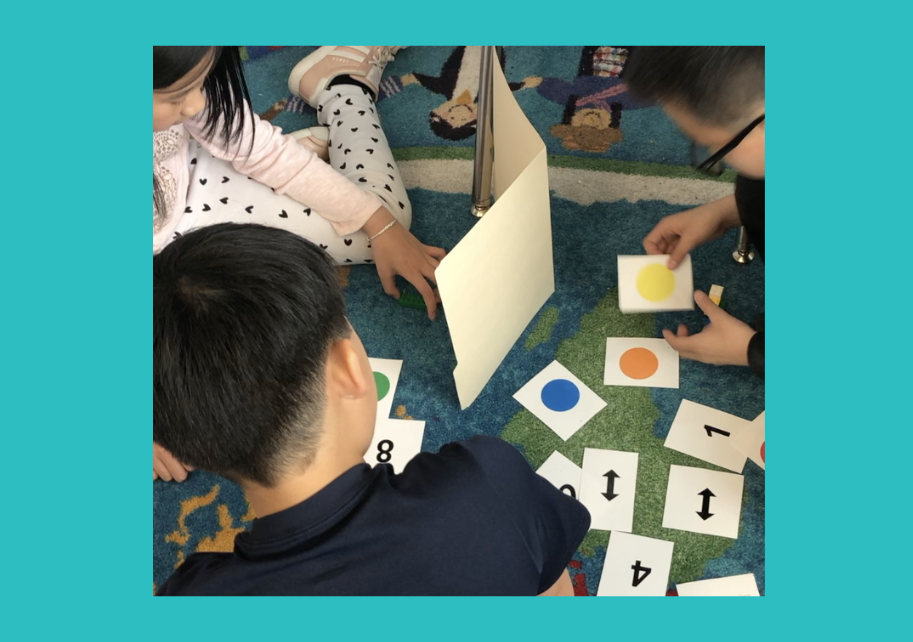Part 2: Applying the Science to Enhance Activation
By Tara Robillard
Now that we know about activation, let’s think about how we can apply it to the way we design and deliver learning experiences for students, especially those with executive function (EF) challenges. There are several ways you can support students that struggle with activation.
Strategy 1: “Activate” with a fun and engaging (and quick) activity
Each INFACT Sequence has activities organized into four stages – Activation, Foundational, Applied and Wrap-Up. Activation activities are quick, fun activities that are designed to prepare learners for CT learning. They build interest through everyday examples and focus attention on salient content. They are the warm-up before a workout. Oftentimes, these activities get students “up and moving” and include games, puzzles or physical activities. In the INFACT Conditional Logic activity sequence, lessons may begin with a quick and related building activity or clapping game.
Strategy 2: Activation Prompts within Activities
Embedded in each activity – the activation section includes suggested steps to prepare learners for the activity including ways to:
- Engage learners with a short activity or “hook” or brainstorm
- Orient learners to the task ahead
- Explain the purpose of the activity
- Introduce the learners’ roles
In the Dice Game activity, learners explore conditional logic and IF-THEN-ELSE statements by playing a dice game.
These are just a few examples of how to help your learners with initiation, organization and prioritization! Other possible structures, supports, skills or strategies you that you might consider include:
- Attach the first step of a task to another approachable task
- Starting task in presence of support
- False deadlines – show stages of task to someone
- Separating task into “baby steps” (in INFACT we like to call this Problem Decomposition)
Now, educators, you can try. Think of a lesson or activity that you do with students. What are the challenges to getting started? How could you modify to support students’ activation?
Share your stories by contacting us. We’d love to hear what you’re thinking!
Acknowledgements
The author would like to acknowledge that the inspiration and much of the information included in this blog post came from her participation in an online-graduate course at Landmark College: Engagement, Self-Regulation, and Motivation. Learn more about Landmark here.
Including Neurodiversity in Foundational and Applied Computational Thinking (or INFACT) is a research and development project funded by the Education Innovation and Research Program (EIR) of the U.S. Department of Education. Learn more about INFACT here.
And finally, teamwork makes the dream work: INFACT activities are the result of the research and development talents and contributions of the EdGE at TERC team and our partners from many organizations across the country, and of course super-star educators.
Now that we know about activation, let’s think about how we can apply it to the way we design and deliver learning experiences for students, especially those with executive function (EF) challenges. There are several ways you can support students that struggle with activation.
Strategy 1: “Activate” with a fun and engaging (and quick) activity
Each INFACT Sequence has activities organized into four stages – Activation, Foundational, Applied and Wrap-Up. Activation activities are quick, fun activities that are designed to prepare learners for CT learning. They build interest through everyday examples and focus attention on salient content. They are the warm-up before a workout. Oftentimes, these activities get students “up and moving” and include games, puzzles or physical activities. In the INFACT Conditional Logic activity sequence, lessons may begin with a quick and related building activity or clapping game.
Strategy 2: Activation Prompts within Activities
Embedded in each activity – the activation section includes suggested steps to prepare learners for the activity including ways to:
- Engage learners with a short activity or “hook” or brainstorm
- Orient learners to the task ahead
- Explain the purpose of the activity
- Introduce the learners’ roles
In the Dice Game activity, learners explore conditional logic and IF-THEN-ELSE statements by playing a dice game.
These are just a few examples of how to help your learners with initiation, organization and prioritization! Other possible structures, supports, skills or strategies you that you might consider include:
- Attach the first step of a task to another approachable task
- Starting task in presence of support
- False deadlines – show stages of task to someone
- Separating task into “baby steps” (in INFACT we like to call this Problem Decomposition)
Now, educators, you can try. Think of a lesson or activity that you do with students. What are the challenges to getting started? How could you modify to support students’ activation?
Share your stories by contacting us. We’d love to hear what you’re thinking!
Acknowledgements
The author would like to acknowledge that the inspiration and much of the information included in this blog post came from her participation in an online-graduate course at Landmark College: Engagement, Self-Regulation, and Motivation. Learn more about Landmark here.
Including Neurodiversity in Foundational and Applied Computational Thinking (or INFACT) is a research and development project funded by the Education Innovation and Research Program (EIR) of the U.S. Department of Education. Learn more about INFACT here.
And finally, teamwork makes the dream work: INFACT activities are the result of the research and development talents and contributions of the EdGE at TERC team and our partners from many organizations across the country, and of course super-star educators.

6/5/2025
AuthorTara Robillard is a senior researcher and curriculum materials and tools developer at TERC. She has degrees in Marine Science and Science Education and taught science at the high school level. Her research and development interests focus on accessibility and differentiating STEM teaching and learning for all students in formal and informal settings.
Share This Page: